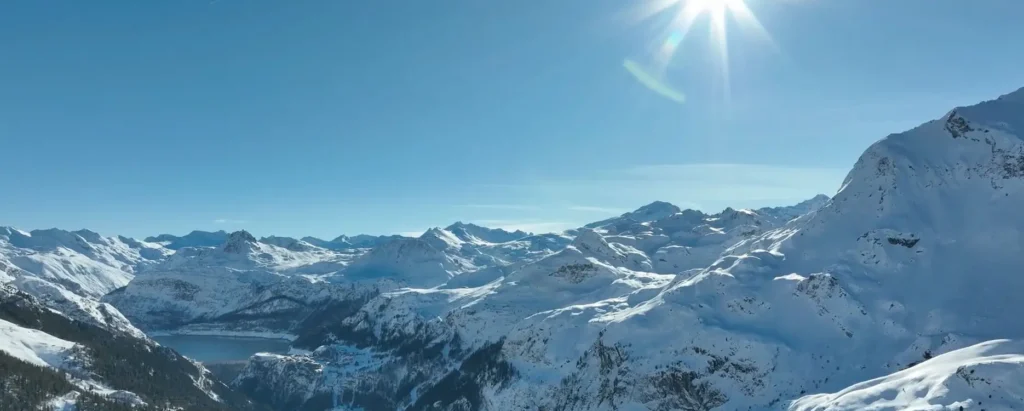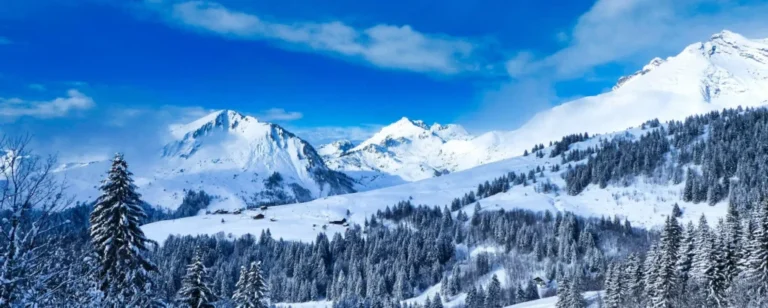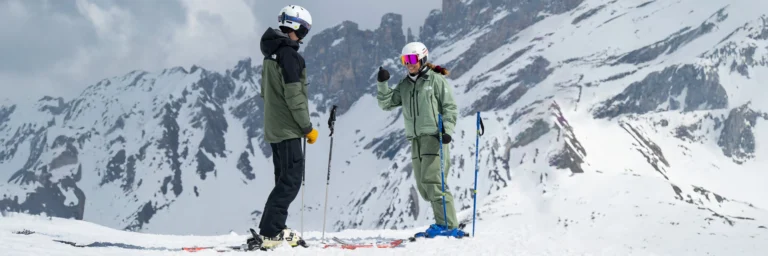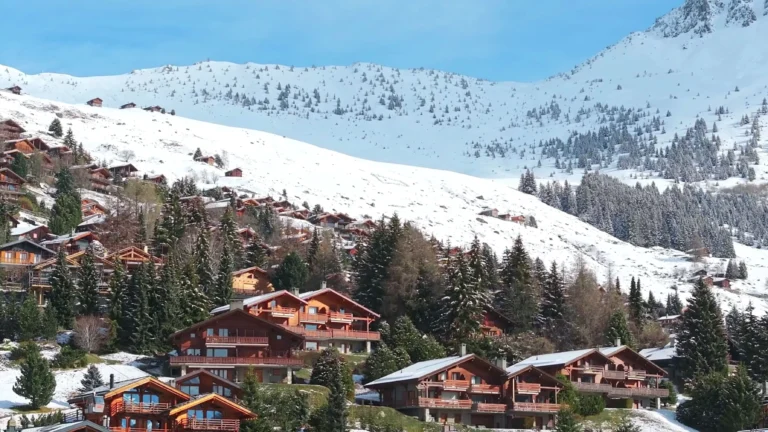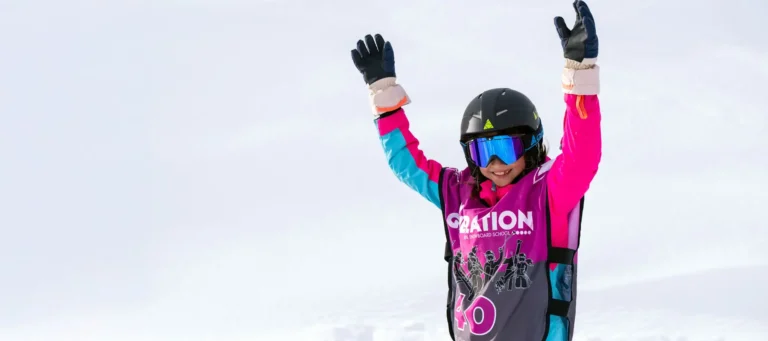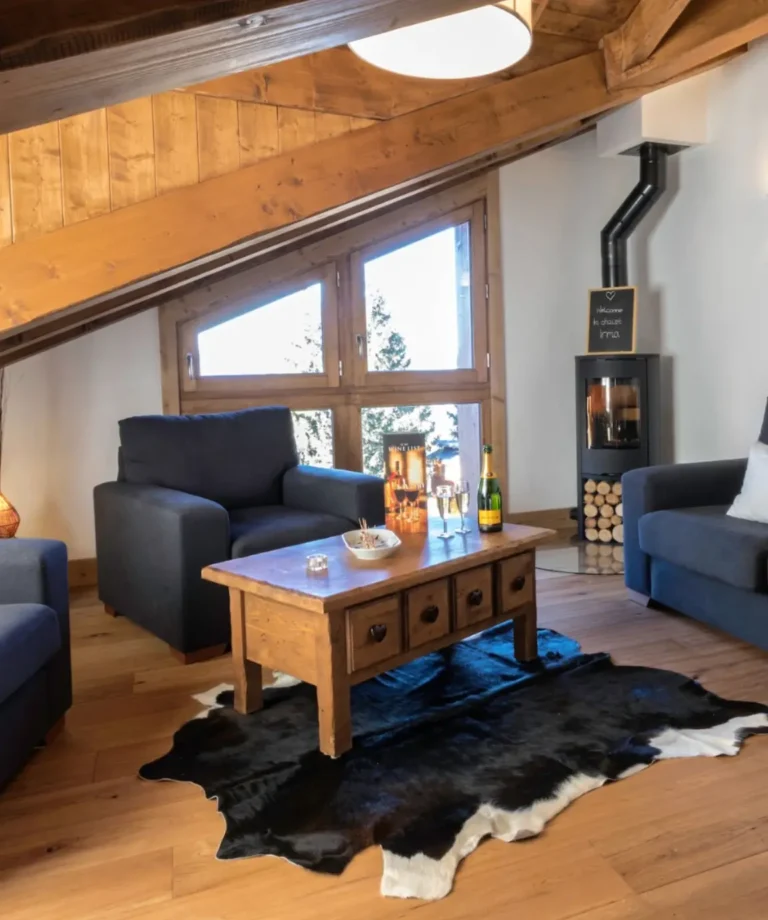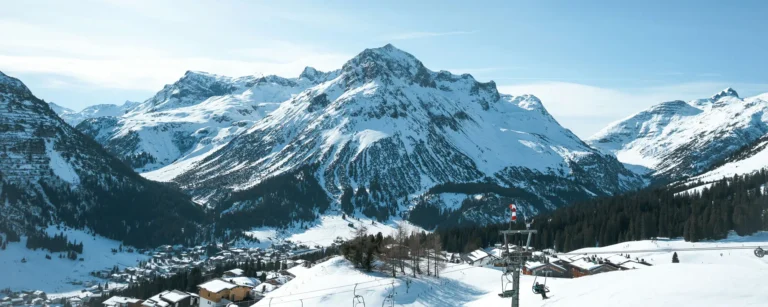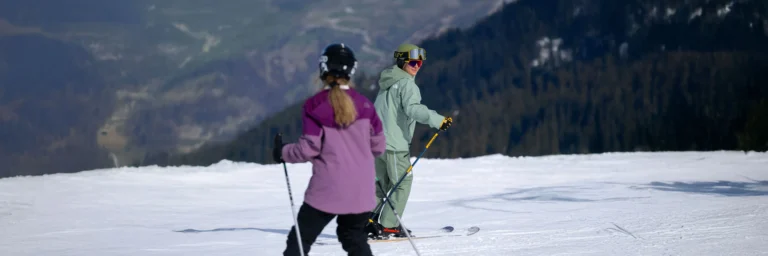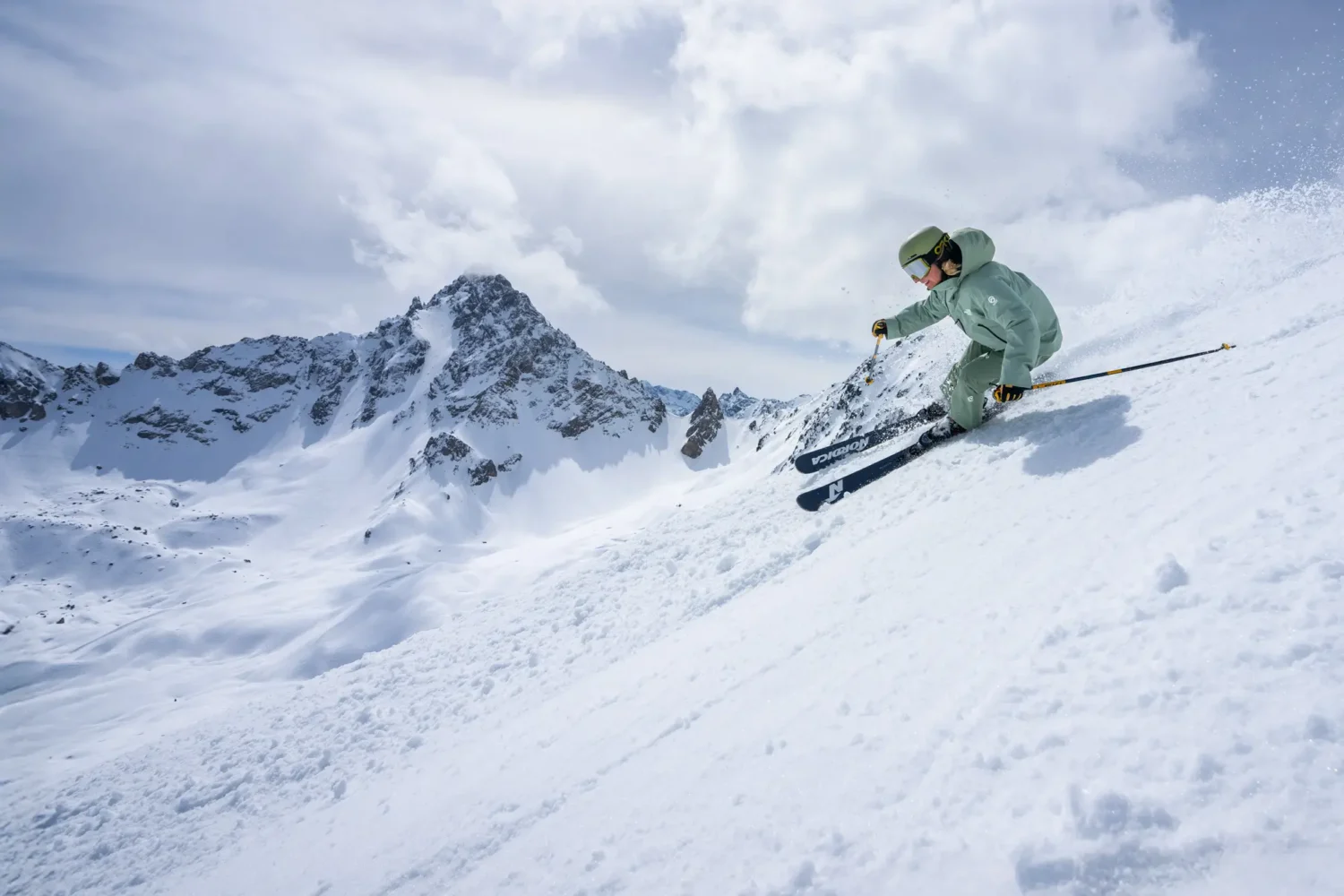Is Tignes good for beginners? Yes – if you know a few shortcuts. This guide will show you where to stay, learn, and which beginner-friendly slopes to start on.
We’ll help you avoid the wrong accommodation, buying the wrong lift pass, or ending up on steep runs too early. This will help you enjoy a smooth, stress-free first ski holiday in Tignes.
Quick Answer: Who Tignes Suits (and When It Doesn’t)
Tignes is a brilliant choice for beginner skiers. Many of its learner zones are next to the main village areas. Tignes also has reliable snow and modern lifts, making it a great place to learn. Thanks to its high-altitude setting, Tignes is snow-sure from early December to April. This gives you a slightly longer period to visit.
Tignes’ high altitude can mean poor visibility during snowy weather. The resort can also be busy during peak weeks like the New Year and the February half-term.
With a smart plan and a good base, though, Tignes offers first-timers a fantastic start to skiing.
Why Tignes Works for Beginners
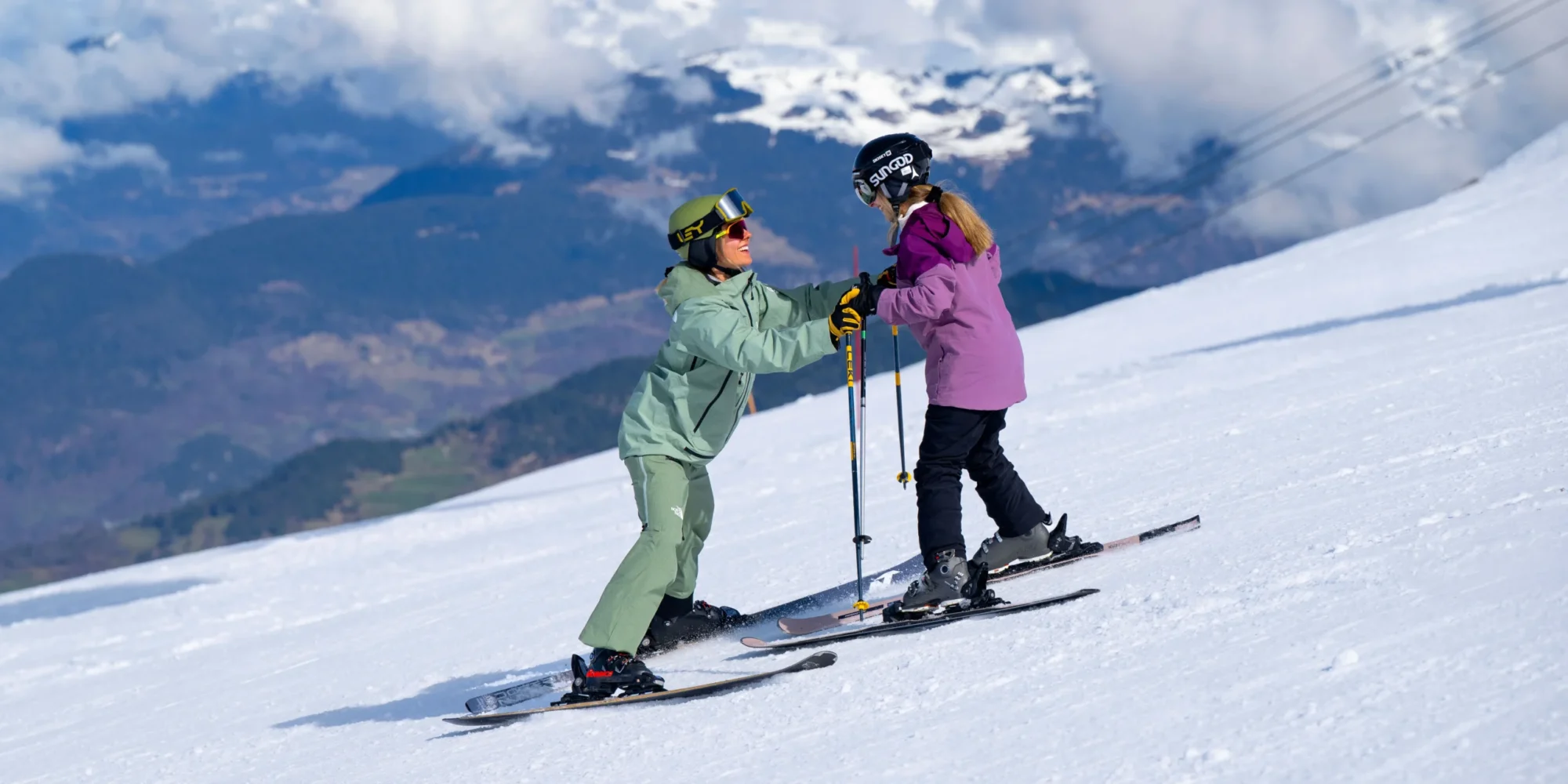
One of the best things about Tignes for beginners is its convenience.
The main villages, Le Lac and Val Claret, have dedicated learner zones. These are very close to much of the accommodation.
Magic carpets and gentle chairlifts make your first days on skis feel approachable. Thanks to free beginner lifts in each area, you won’t need a lift pass on day one.The resort also boasts a wide variety of green and blue runs. This makes progression feel natural and exciting once you’ve found your ski legs. Choosing a suitable base in Tignes makes it easier to rent equipment or get to ski school meeting points.
When Tignes May Feel Tricky
That said, Tignes isn’t without its challenges. Tignes is high with the resort centre at 2,100m.
This means that Tignes can suffer from flat light or whiteouts on snowy days. This can be disorienting for new skiers. Some of the green runs in Tignes are also steeper than you might expect for a beginner’s label.
Green runs are excellent for building confidence once you’ve got the basics. If you start on a slope that is too difficult, it can knock your confidence back. During peak holiday weeks, some of the beginner areas can feel crowded in the mornings. This isn’t ideal when you’re trying to stay calm and focus on learning.
Avoid These Classic First‑Timer Mistakes in Tignes
A common mistake beginners make in Tignes is staying in the wrong part of the resort. While Tignes 1800 and Les Brévières 1550 are charming and peaceful, they’re less beginner-friendly. This is because they have less access to ski schools and beginner slopes.
Getting to and from ski lessons can involve long walks or bus rides. Skiing back to your accommodation is often difficult or impossible for first-timers.
Instead, opt for Le Lac or Val Claret. Here, you’ll find much more convenient accommodation. There is also better access to gentle areas and great rental and lesson options nearby.
Another mistake is buying the full-area Tignes–Val d’Isère lift pass straight away. Most beginners won’t leave the nursery slopes in the first few days. This means there’s no need to pay for access to the entire Espace Killy region on day one.
Tignes offers several free lifts for beginners. Stick with these until your instructor suggests upgrading. Some lesson packages even include lift passes, so check before you book.
Jumping onto steeper slopes too soon is also a trap many first-timers fall into. While greens are beginner runs, some are steeper or narrower than others. We recommend starting on the magic carpets or gentle lifts in Le Lac and Val Claret. You can work your way up under your instructor’s guidance.
Skipping lessons altogether is another common mistake. It might feel like you can figure it out as you go, but skiing has a learning curve. One good lesson can make the difference between frustration and fun.
Ski lessons help you to build confidence and learn proper technique from the start. This will help you get the most out of your time on the mountain.
Finally, make sure your kit is up to the task. Ill-fitting boots will be uncomfortable and make it harder to ski. If you have the wrong goggles, it’ll make it difficult to see in flat light.
Dress in layers – especially with a warm mid-layer and waterproof shell – and don’t skip the helmet.
Where Beginners Should Stay in Tignes
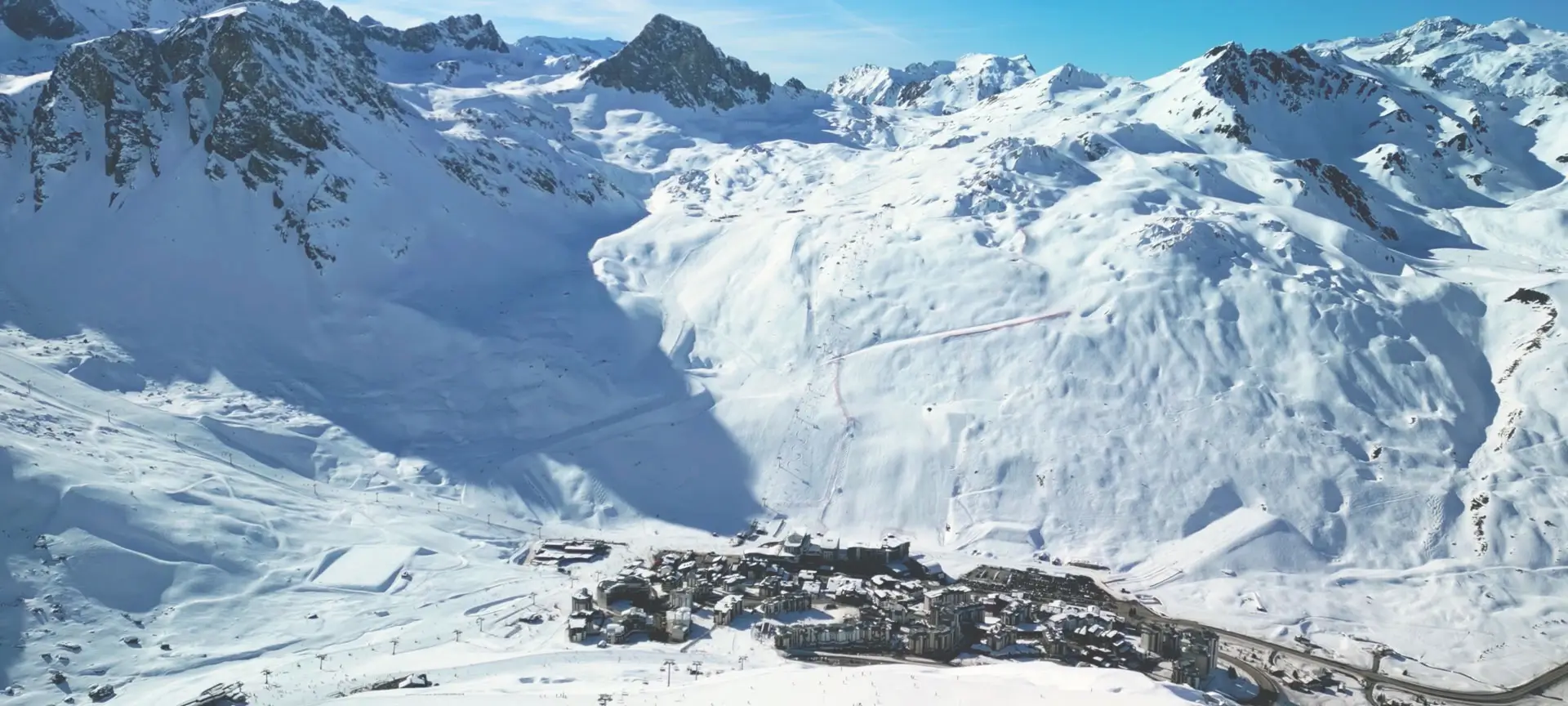
The best areas for beginners in Tignes are Le Lac and Val Claret. Both offer near-instant access to gentle slopes, ski schools, hire shops, and cafés. You can walk from most accommodations to the nursery slopes in only a few minutes.
This is ideal when you’re wearing ski boots for the first time. These areas are well-connected by shuttle buses, too, in case you need to get around without skis.
Tignes 1800 and Les Brévières are better suited to more advanced skiers or those who don’t mind being a bit more isolated.
For a first-time trip, we recommend prioritising convenience over charm.
The Best Places to Learn and First Slopes to Try
The Rosset chairlift and accompanying nursery area are ideal if you’re staying in Le Lac.
There’s a free magic carpet and a wide, slope perfect for building confidence. Once you’re comfortable stopping and turning, move on to the Lavachet drag lift. Val Claret has a similar setup with its own learner zone and easy greens just above the village.
When you’re ready to try longer runs, head for Petit Col, Grattalau, or the Lac run. These offer more space and speed without being intimidating. Your instructor will help guide this progression. This will mean that you’re always skiing within your ability.
What Not To Worry About On Day One
During your first ski lesson, your instructor will help you get to grips with your equipment. You also don’t have to worry about taking lifts. When it is time, your instructor will guide you on how to use them.
Don’t worry about pushing yourself too hard from the start. Be sure to take a well-earned break with a hot chocolate at a nearby café. This will keep your energy up and nerves calm. There are great spots near the Rosset area.
Lift Pass and Kit: What Beginners Actually Need
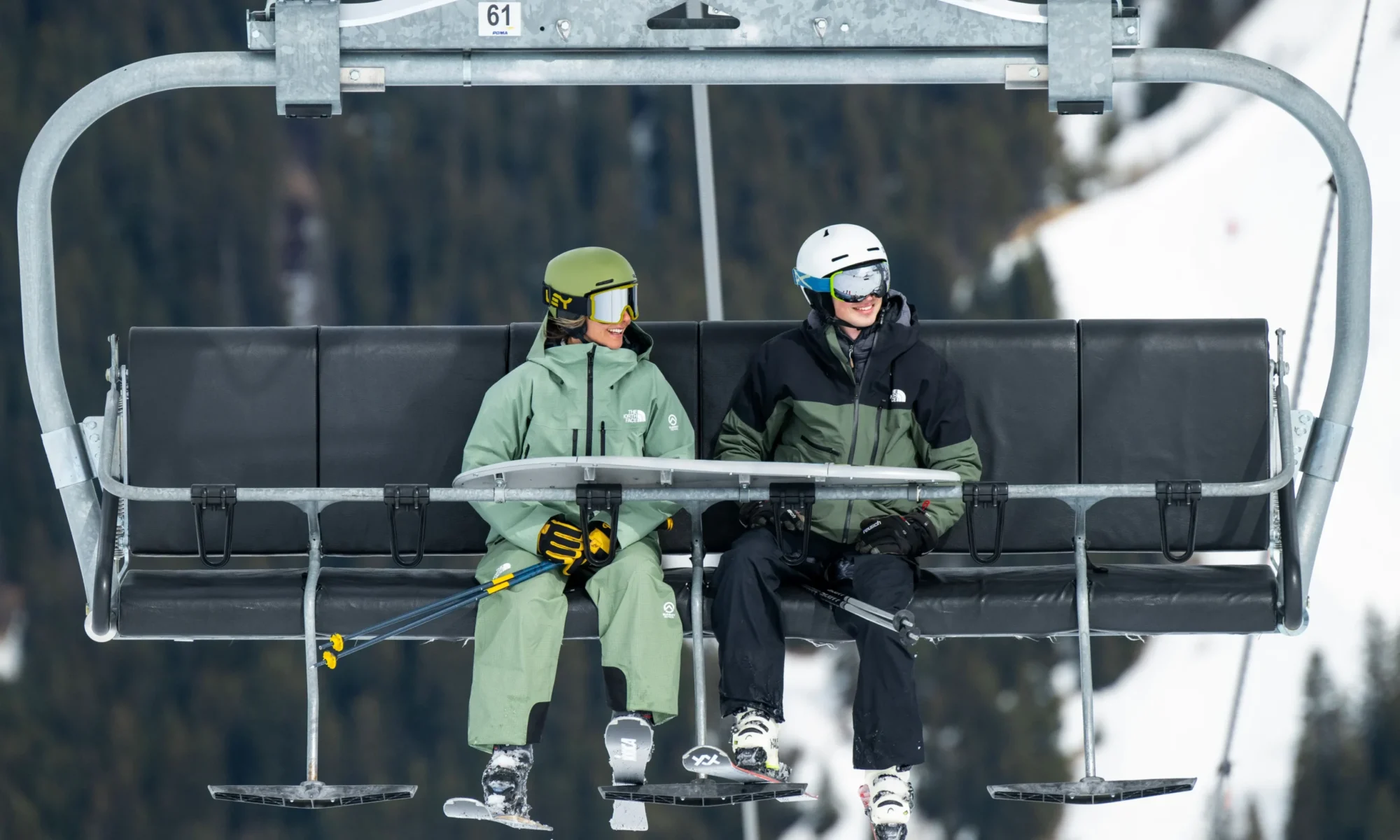
Lift Pass: You don’t need a full-area lift pass for your first few days. Stick to the free beginner lifts around Le Lac, Val Claret, and Lavachet. Consider upgrading to the Tignes pass once you can ski longer greens or blues. The full Tignes–Val d’Isère pass is fantastic. It’s only worth upgrading once you’re confident skiing on blue runs.
Rental gear: When renting gear, start with your boots. Comfort and fit are more important than anything else here. Once they feel right, they get fitted for skis and grab a helmet and goggles.
You’ll need goggles for both bright and flat light. We recommend either two pairs or interchangeable lenses. Weather conditions can change, and clear vision is key to enjoying your time on the mountain.
Your First 48 Hours in Tignes: Step-by-Step Plan
Day 1: Arrive in the afternoon, get your boots fitted at the rental shop, and collect your lift pass. It can also be helpful to take a short walk around the village to get your bearings. Don’t worry about skiing on the day you arrive. It’s best to enjoy the resort, get organised and rest up for the week ahead.
Day 2: Start your morning with a beginner lesson. You’ll cover basics like putting on your skis, standing up, and doing your first glides and turns. In the afternoon, try a few laps on your own or with your group on the magic carpet or Rosset area greens. Focus on repetition and confidence – not speed or distance.
